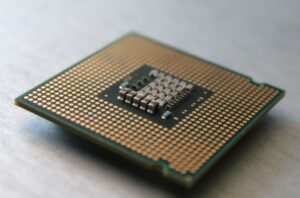Who Is Neuralink For?
Neuralink, founded by Elon Musk, has been making headlines with its ambitious mission to develop implantable brain-machine interfaces. This revolutionary technology aims to enhance human cognition and revolutionize the way we interact with computers. While still in its early stages of development, Neuralink’s potential applications have sparked interest and curiosity among many. Let’s explore who Neuralink is for and how it may impact various aspects of our lives.
Key Takeaways
- Neuralink aims to develop brain-machine interfaces to enhance human cognition and revolutionize computer interactions.
- Neuralink’s potential applications include medical treatments, brain-computer interfaces, and AI integration.
- The technology could benefit individuals with disabilities, neurological conditions, or those seeking cognitive enhancements.
- Neuralink may also have implications in various industries, such as healthcare, gaming, and artificial intelligence.
Medical Applications
One of the primary target audiences for Neuralink is individuals with disabilities or neurological conditions. The technology could provide a breakthrough in medical treatments and improve the quality of life for those affected. **Imagine paralysis patients regaining control of their limbs or individuals with neurodegenerative diseases delaying the progression of their condition*. Neuralink’s brain-machine interfaces have the potential to establish direct connections between the brain and external devices, unlocking new possibilities in healthcare.
Brain-Computer Interfaces
Neuralink’s brain-machine interfaces have the potential to enable seamless interactions between our brains and computers. **These interfaces can allow for faster communication and data transfer*. Imagine controlling a computer or device using only your thoughts, bypassing traditional input methods. This technology could revolutionize human-computer interactions and open up new avenues for individuals who have limited mobility or physical impairments.
Artificial Intelligence Integration
Neuralink’s technology has the potential to enhance our connection with artificial intelligence (AI). By creating a direct link between the human brain and AI systems, **we could vastly accelerate our learning abilities and problem-solving skills*. This integration may enable humans to keep up with the rapid advancements in AI and potentially unlock entirely new possibilities. Neuralink’s vision of a symbiotic relationship between humans and AI could have profound implications for various industries, such as automation, robotics, and medical diagnostics.
| Features | Neuralink | Traditional BCI |
|---|---|---|
| Number of Electrodes | 1000+ | Less than 100 |
| Biocompatibility | Biocompatible materials used for better integration | May cause inflammation or tissue damage |
| Bandwidth | High data transfer rate between brain and external devices | Lower data transfer rate |
Industries That Could Be Impacted
Neuralink’s technology has the potential to disrupt various industries. Here are some sectors that could be impacted:
- Healthcare: Improved medical treatments and diagnostics.
- Gaming: Enhanced virtual reality experiences through direct brain interactions.
- Automation: Integration of AI and human workforce for increased productivity.
| Stage | Description |
|---|---|
| Research & Development | Exploratory stage to refine technology and validate concepts. |
| Clinical Trials | Testing the safety and efficacy of Neuralink implants in humans. |
| Commercial Availability | Accessible to the general public with various applications. |
Looking Ahead
As Neuralink continues to push the boundaries of brain-machine interface technology, it holds significant promise for a wide range of individuals and industries. The potential to enhance medical treatments, revolutionize human-computer interactions, and integrate with AI systems has captivated the imaginations of many. While there are still significant technological and ethical considerations to address, the future possibilities are undeniably exciting. We eagerly anticipate the further development and commercial availability of Neuralink’s groundbreaking technology.

Common Misconceptions
1. Neuralink is only for individuals with neurological disorders
There is a common misconception that Neuralink, the brain-computer interface company founded by Elon Musk, is exclusively targeted towards individuals with neurological disorders. However, Neuralink’s technology has a much broader scope and potential applications beyond just medical use.
- Neuralink can enhance cognitive abilities in healthy individuals
- It can potentially allow seamless interaction between humans and computers
- Neuralink has the potential to revolutionize various industries such as gaming and virtual reality
2. Neuralink is only for the wealthy elite
Another common misconception is that Neuralink is only accessible to the wealthy elite due to the expected high cost of the technology. While it is true that Neuralink’s initial focus will be on medical applications, the ultimate goal is to make the technology affordable and accessible to the general public.
- Neuralink aims to drive down costs over time, just like other disruptive technologies
- The democratization of brain-computer interfaces is a primary objective for Neuralink
- By making Neuralink accessible to a wider audience, it can have a more significant societal impact
3. Neuralink will turn people into “superhumans”
One misconception surrounding Neuralink is that it will transform individuals into superhumans with extraordinary abilities. While the technology has the potential to enhance certain aspects of human cognition, it is essential to understand that it has limitations and cannot fundamentally change the basic human capabilities.
- Neuralink can potentially improve memory and cognitive function
- It may enable individuals to control external devices through thought alone
- However, it cannot grant extraordinary or superhuman abilities that exceed the natural human limitations
4. Neuralink is invasive and risky
Some people believe that Neuralink’s brain implants are inherently invasive and risky, which leads to concerns about the safety of the technology. While the technology does involve implanting tiny threads into the brain, Neuralink’s approach endeavors to minimize invasiveness and prioritize safety as a top priority.
- Neuralink’s threads are significantly thinner than a human hair, reducing the invasiveness of the procedure
- Implanted threads are designed to be incredibly flexible, reducing the risk of damage to brain tissue
- Neuralink is actively working to ensure the safety and efficacy of their implants through rigorous research and development
5. Neuralink seeks to control or manipulate individuals’ thoughts
There is a misconception that Neuralink’s goal is to control or manipulate individuals’ thoughts using their brain-computer interface technology. However, Neuralink’s primary objective is to provide a tool that allows individuals to interact with technology more seamlessly and to improve the quality of life for those suffering from neurological disorders.
- Neuralink is focused on enhancing communication between the brain and external devices, not mind control
- The technology aims to restore functionality and improve the well-being of individuals, rather than manipulating thoughts or behavior
- Thought privacy and ethical considerations are paramount in Neuralink’s research and development process

Introduction
Neuralink, the brain-computer interface company founded by Elon Musk, has sparked immense curiosity and discussion about the potential applications and beneficiaries of this revolutionary technology. With the aim of merging humans and AI at a neural level, Neuralink has the potential to revolutionize healthcare, enhance communication, and empower those with disabilities. This article explores ten fascinating aspects that shed light on who Neuralink could impact and how it could shape the future.
1. Enhanced Learning Potential
Neuralink could potentially enable faster learning and knowledge assimilation by directly connecting our brains to vast databases of information, allowing us to instantly access knowledge and skills.
2. Accessibility for the Blind
By providing a direct interface between the visual cortex and external devices, Neuralink could grant blind individuals the ability to perceive images and objects, thus opening up a new world of independence and mobility.
3. Immersive Virtual Reality
Neuralink’s potential to interface with virtual reality technology could lead to an unprecedented level of immersion, making experiences feel truly real by directly stimulating the brain’s sensory receptors.
4. Communication Breakthrough
For individuals who have lost the ability to speak due to injury or illness, Neuralink could bridge the communication gap by translating their thoughts into written or spoken words, enabling them to express themselves once again.
5. Revolutionizing Assistance for Paralysis
Neuralink could potentially restore mobility for individuals with paralysis by acting as a bridge between the brain and prosthetic limbs, enabling them to regain control and independence in their daily lives.
6. Augmented Memory
With the ability to store and retrieve memories through Neuralink, individuals could alleviate the burden of remembering everything and achieve a higher level of organization and efficiency in their personal and professional lives.
7. Treatment for Neurological Disorders
Neuralink’s advanced technology holds the potential to revolutionize the treatment of neurological disorders such as Alzheimer’s, Parkinson’s, and epilepsy by directly modulating brain activity to mitigate symptoms and improve quality of life.
8. Brain-Computer Gaming
Imagine playing video games using only your thoughts. Neuralink could enable a direct interface between our brains and gaming systems, providing an unprecedented level of immersion and control within the virtual world.
9. Enhanced Cognitive Abilities
By augmenting our brains with Neuralink, we could potentially enhance our cognitive abilities, enabling us to process information faster, solve complex problems more efficiently, and unleash our full mental potential.
10. Revolutionary Rehabilitation Therapies
Neuralink holds immense promise for revolutionizing rehabilitation therapies, allowing individuals recovering from stroke or brain injuries to rewire their neural pathways and regain lost functionalities.
Conclusion
From unlocking new learning potentials to aiding the visually impaired, Neuralink has the potential to transform various aspects of human life. By merging our brains with AI technology, the possibilities of this neural interface appear boundless. However, as Neuralink continues to evolve, ethical and societal considerations must be diligently addressed to ensure its adoption benefits all of humanity.
Frequently Asked Questions
Who is Neuralink’s brain-computer interface for?
Neuralink’s brain-computer interface is primarily developed for individuals with neurological conditions such as paralysis, spinal cord injuries, or other disabilities that affect motor functions.
What does Neuralink aim to achieve with its brain-computer interface?
Neuralink aims to create a technology that seamlessly merges humans with artificial intelligence, enhancing cognitive abilities and potentially treating neurological disorders.
How does Neuralink benefit individuals with paralysis?
Neuralink’s brain-computer interface allows individuals with paralysis to regain control over their lost motor functions by directly connecting their brains to external devices such as prosthetics or computers.
Can Neuralink be used by healthy individuals?
While Neuralink’s current focus is on assisting individuals with neurological conditions, it is possible that in the future, the technology could be available for use by healthy individuals for purposes like augmenting cognitive abilities.
Is Neuralink suitable for children?
The long-term effects of Neuralink’s brain-computer interface on children are not fully known, so it is currently not recommended to be used on individuals below a certain age.
Are there any risks or side effects associated with Neuralink?
As with any invasive procedure, there are associated risks, such as infection or damage to brain tissue. However, Neuralink aims to ensure the highest safety standards and continually improve the technology to minimize such risks.
Can Neuralink cure neurological disorders?
Neuralink’s brain-computer interface is not a guaranteed cure for all neurological disorders. However, it holds the potential to provide significant improvements in treatment by enhancing communication between the brain and external devices.
How much does Neuralink’s brain-computer interface cost?
As of now, Neuralink’s brain-computer interface is still in the early stages of development and not yet available for widespread use. Therefore, the exact cost is not known.
What is the procedure for getting Neuralink’s brain-computer interface?
The specific details of the procedure for obtaining Neuralink’s brain-computer interface have not been publicly disclosed. It would require surgical intervention to implant the device directly into the brain.
Where can I find more information about Neuralink?
You can find more information about Neuralink on their official website and through various reputable news sources covering their advancements in brain-computer interfaces.




